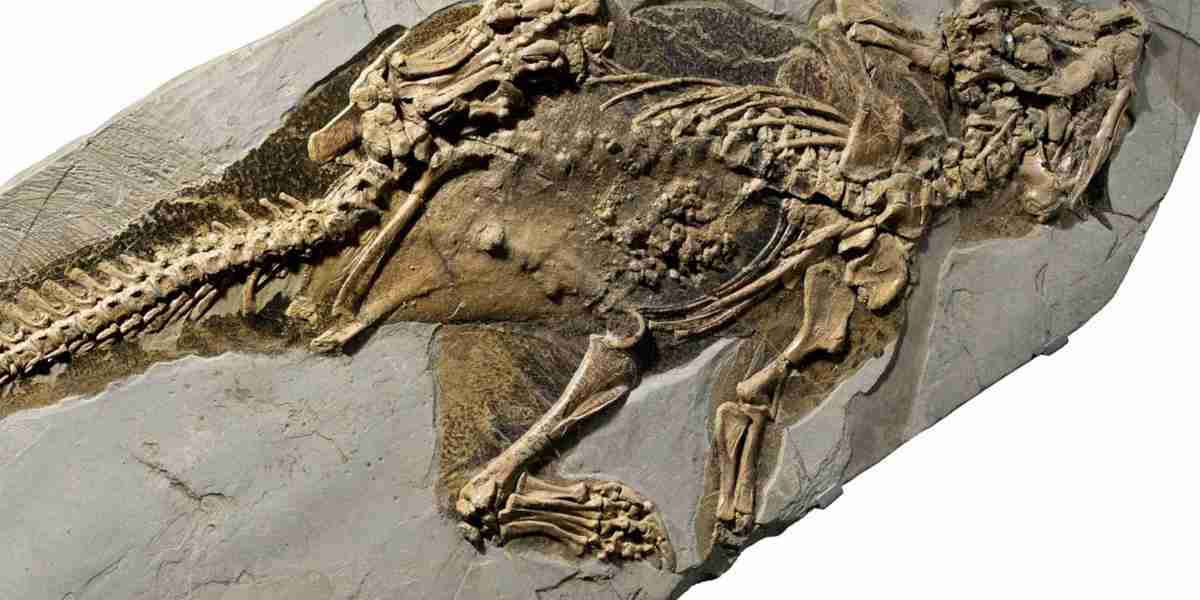In the entryway of Frankfurt, Germany’s Senckenberg Natural History Museum, a remarkable ambassador from the distant past holds court: a dog-size dinosaur called Psittacosaurus that died some 130 million years ago. The creature is so well preserved, scientists can see the finest details of its skin with astounding fidelity.
The specimen—officially known as SMF R 4970—left China in the 1990s under legally dubious circumstances, amid a rash of fossil smuggling out of the country’s Liaoning Province. After the fossil traveled through the U.S. and Europe in the hands of a German dealer, the museum bought it in 2001 to keep it available to science (repatriation efforts at the time fell apart). Ever since, the dinosaur has yielded one stunning discovery after another.
Dinosaur-skin fossils aren’t unheard of: North American hadrosaur “mummies,” for instance, preserve areas of scales. But this Psittacosaurus has possibly the most skin preserved from a single non-avian dinosaur—and even contains vestiges of its melanin pigmentation. “It’s been such a treasure trove,” says Jakob Vinther, a paleontologist at the U.K.’s University of Bristol who has closely studied the dinosaur.
It also keeps yielding surprises. In 2021, a team led by Vinther found that this Psittacosaurus is the only known non-avian dinosaur with a preserved cloaca, an all-purpose orifice for defecation, urination, and sex. Last year, researchers doing a deep-dive study of the dinosaur’s scales announced that they had spotted its “belly button”: a wondrous snapshot of the ancient creature’s time in ovo.





